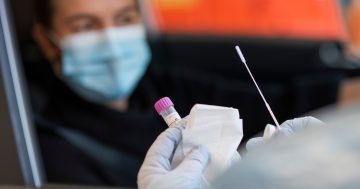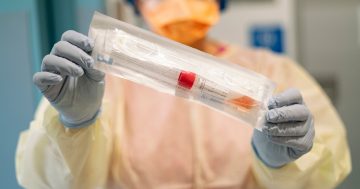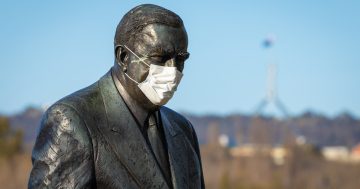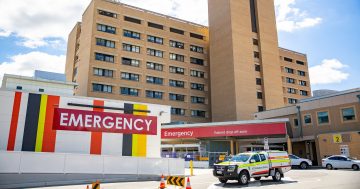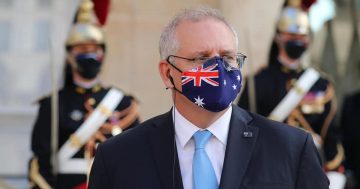
Case numbers in the Territory dropped to 536 in the last week. Photo: Michelle Kroll.
Reported COVID-19 case numbers in the Territory have continued to drop, with 536 (213 PCR and 323 RAT) infections identified in the week to 4 pm on Wednesday, 5 October.
As of yesterday, there were 53 people requiring hospitalisation for the virus, including one in the ICU. No one requires ventilation.
There are 312 active cases in the ACT and since March 2020, 206,285 infections have been recorded.
Last week, the ACT recorded 616 (264 PCR and 352 RAT) COVID-19 infections and the death of a man in his 80s.
Of the Territory’s five to 15 population, 77.6 per cent have received two doses of vaccine; 78.2 per cent of those aged 16 and over have received three doses; 59.1 per cent of those aged 50 and over have received four doses.
According to ACT Health’s most recent weekly epidemiological report, which covered the period of Monday, 26 September, to Sunday, 2 October, repeat infections have jumped.
In that period, 15 per cent of all recorded cases (560) were in individuals who had more than one episode of COVID-19.
This is a jump on the previous week in which 9 per cent of infections were repeated.
“The proportion of ACT residents who experience multiple episodes of COVID-19 is expected to increase over time as immunity wanes following COVID-19 infection and/or vaccination, and as new variants and subvariants emerge, but short-term fluctuations may occur due to small absolute numbers,” Health’s report stated.
The lower case numbers come a week after the Territory government revoked the public health emergency declaration after more than two and a half years.
A COVID-19 Management Declaration is now in place.
From next Friday, most people who test positive for COVID-19 will no longer be required to isolate.
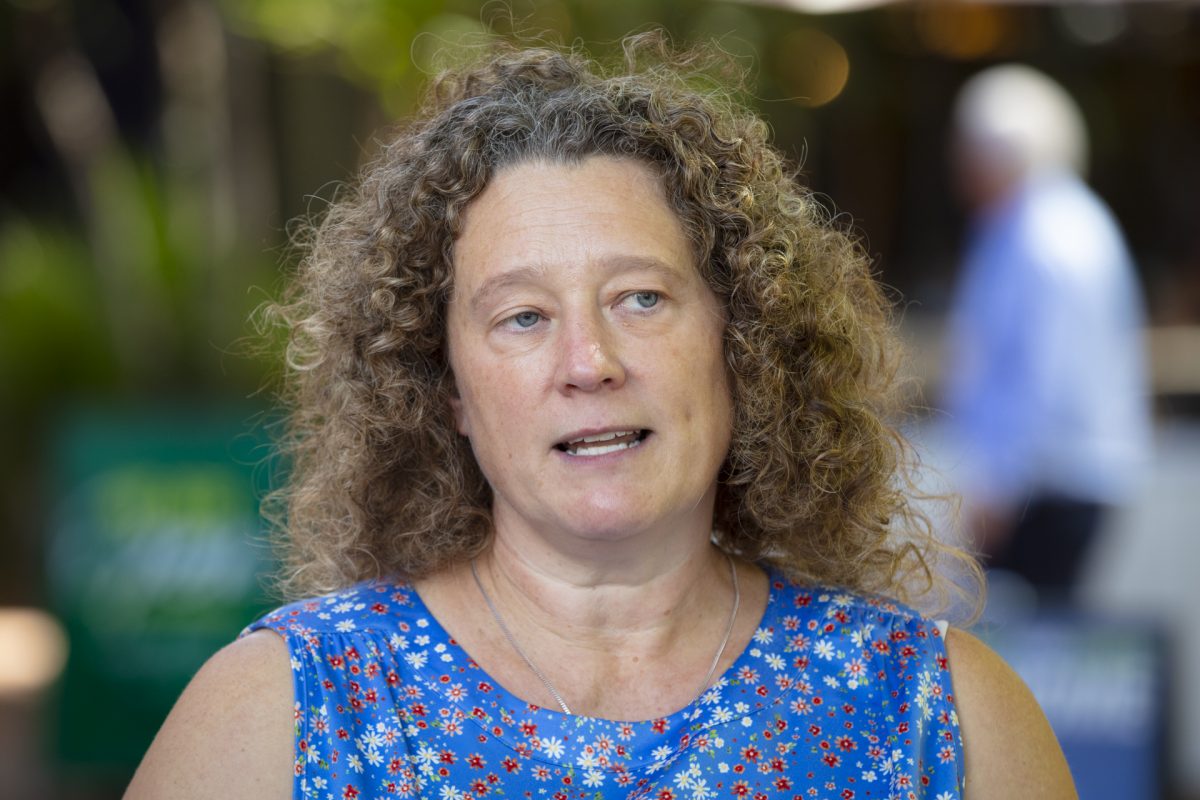
ACT Chief Health Officer Dr Kerryn Coleman said the scrapping of mandatory isolation could theoretically lead to an uptick in cases. Photo: Thomas Lucraft.
Health authorities have urged Canberrans to stay at home if unwell and ACT Chief Health Officer Dr Kerryn Coleman told reporters last week she expected Canberrans would do the right thing.
Dr Coleman described the decision to scrap mandatory isolation periods and “COVID exceptionalism” as “complex”.
Head of the Australian Medical Association Dr Steve Robson has been highly critical of the decision made by National Cabinet.
The nurses and midwives union has also expressed concern over removing the remaining public health measures.
Pandemic leave payments will no longer be available from that date apart from people who work in high-risk settings like aged care, disability care, hospitals and Indigenous healthcare.
Workers in those high-risk settings will still be required to isolate.
PCR testing services have also been scaled back in line with reduced demand in the community and are now recommended for vulnerable cohorts, those who cannot access a RAT and those who have symptoms and a negative RAT.
PCR tests conducted in the period covered by the recent epidemiological report declined to 3871 from 4916 in the previous week. The test positivity rolling mean for the reporting period was 6 per cent compared with 7 per cent last week.
Interstate, over the past week, NSW recorded 10,767 new cases (6799 RAT and 3968 PCR) and 41 people died with the virus.
There are now 954 COVID-19 patients in the state’s hospitals and 23 people in ICU.
Victoria recorded 9230 cases and 43 pandemic-related deaths.
The seven-day rolling average for hospitalisations was 137 patients and nine people in the ICU.












